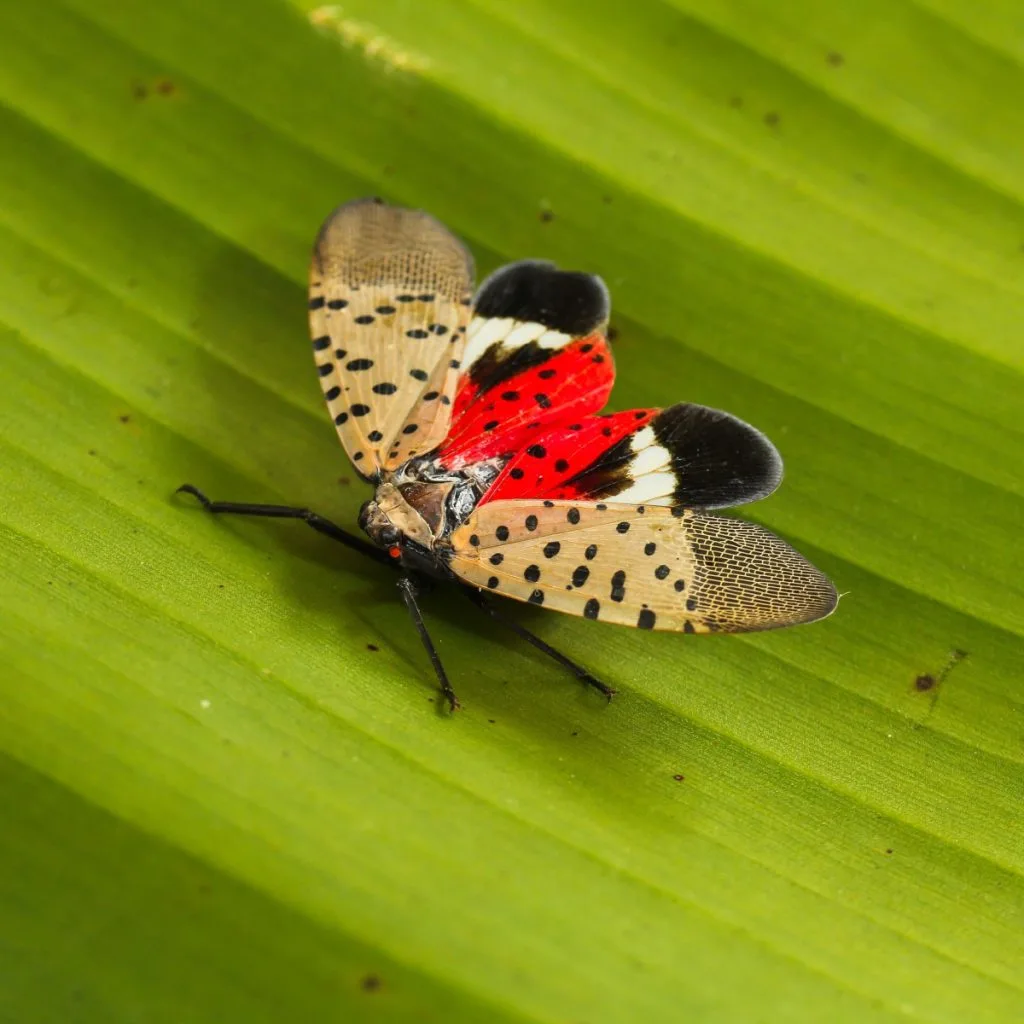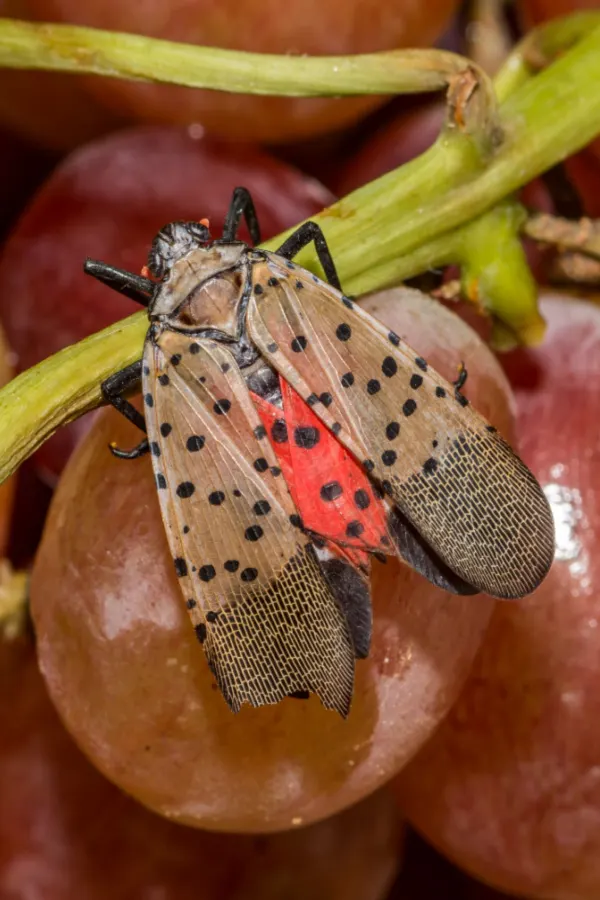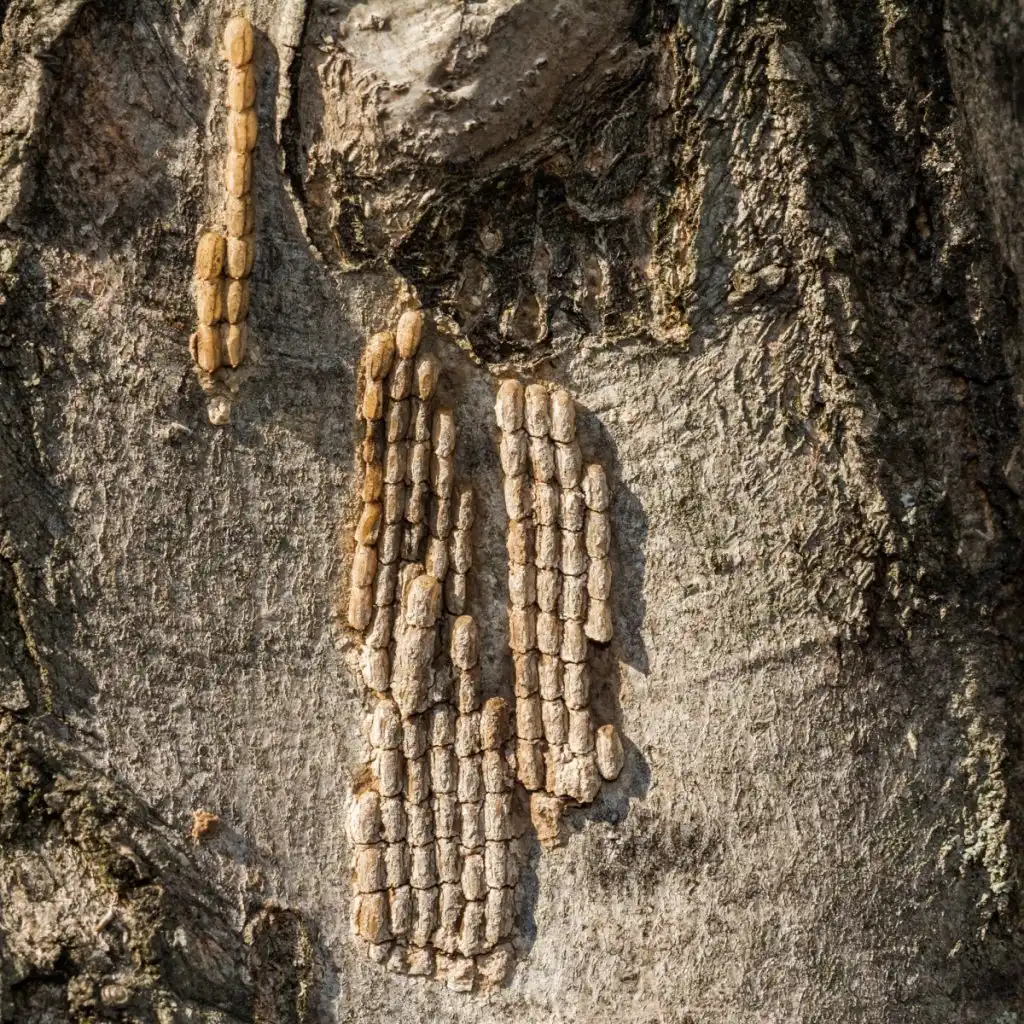The spotted lanternfly has quickly become one of the most troublesome insects to appear in the United States in recent years. And it doesn’t show any signs of stopping its rapid spread and growth anytime soon!
The lanternfly first showed up in Pennsylvania sometime around 2014. It is though to have most likely come from Asia on shipping materials or outdoor goods. Since then, it has spread to many eastern states, damaging crops, trees, and gardens along the way.
The insect doesn’t move far on its own, but easily travels when people unknowingly carry its eggs or adults on vehicles, firewood, plants, or patio furniture. Because of that, homeowners play a big role in stopping it from spreading even farther.

The Dangers Of The Spotted Lanternfly
The Plants The Spotted Lanternfly Loves
The biggest danger from the spotted lanternfly is how it feeds. It uses a sharp mouth to pierce plants and suck out sap. When hundreds or even thousands of them feed on a single tree, vine, or shrub, they weaken the plant by draining away nutrients it needs to survive.
This can cause leaves to wilt, growth to slow down, and fruit or flowers to stop developing. Over time, repeated attacks will kill branches or even entire plants. Vineyards, orchards, and nurseries have suffered the most because the insect loves grapevines, apple trees, and maples. But even home gardens are at risk, especially if there are fruit trees, grapevines, or decorative plants like roses and lilacs nearby.
In addition to weakening plants, the spotted lanternfly creates a sticky mess everywhere it goes. As it feeds, it releases a sugary liquid called honeydew.
The honeydew coats leaves, decks, and patio furniture and soon grows a black, sooty mold. The mold blocks sunlight from reaching leaves and makes everything beneath the insects look dirty and stained. Homeowners often notice this mess before they even see the insects themselves.

Cars parked under infested trees can be covered in sticky residue. Outdoor furniture and walkways can become slippery. They also attract ants and wasps looking for the sweet liquid. The problem can get bad enough that people find it hard to enjoy time outdoors when lanternflies are active.
Why They Are Difficult To Control
The spotted lanternfly’s life cycle makes it a year-round concern. In the fall, females lay egg masses that look like patches of gray, dried mud. These eggs can be found not only on trees but also on fences, rocks, firewood, campers, grills, and even house siding.
Each patch holds 30 to 50 eggs, and they survive winter very well. In spring, the eggs hatch into tiny black-and-white spotted nymphs that begin feeding on soft new plants. As summer comes, they grow larger and develop red markings before turning into the gray, spotted adults that most people recognize.
Adults are most noticeable in late summer and fall when they gather in large groups on trees and structures.
How To Help Stop The Spread
At home, you can take several simple steps to protect their property and help stop the spread of the spotted lanternfly. One of the most important things to do is to inspect outdoor items regularly. In the fall and winter, check tree trunks, outdoor furniture, firewood piles, and vehicles for egg masses.

If you find them, scrape them off with a plastic card or putty knife into a bag filled with rubbing alcohol or hand sanitizer to kill the eggs before throwing them away. If you are traveling from an area known to have lanternflies, always look over your vehicle and trailer before leaving.
A quick inspection can make a big difference in preventing the pest from moving to new places. Keeping yards tidy can also help. The spotted lanternfly’s favorite tree is the tree-of-heaven, an invasive species that grows along roadsides and in open areas.
If you have one of these trees on your property, consider removing it. It looks similar to sumac but has smooth edges and a strong odor when the leaves are crushed. Getting rid of tree-of-heaven can reduce the number of lanternflies near your home since they often use it for feeding and laying eggs. It can also help eliminate stink bugs too as they love the tree! See: How To Stop Stink Bugs From Getting In Your House
Controlling The Spotted Lanternfly Around Gardens
Another good prevention step is not to move firewood, building materials, or outdoor decorations from one area to another, especially from places that already have lanternflies. Even a small egg mass can lead to a new infestation miles away.
Try to buy firewood locally and burn it where you buy it. If you store wood, keep it off the ground and away from trees or structures so it’s easier to inspect.
In gardens and around the home, focusing on plant health is one of the best defenses. Strong, healthy plants are better able to handle some feeding damage.

Regular watering during dry spells, keeping weeds under control, and adding mulch around the base of plants can all help reduce stress. Cleaning sooty mold from leaves with a light spray of water can also help plants recover and continue to grow.
In small gardens, keeping a close eye on new growth in spring and summer helps catch problems early before the insects build up in large numbers.
Staying Persistent
Because spotted lanternflies often gather on sunny surfaces, they can become more than just a plant problem. Homeowners have reported finding them on patios, fences, and even siding. Their jumping behavior can be surprising but they do not bite or sting humans or pets.
For many homeowners, one of the most frustrating parts of dealing with the spotted lanternfly is how quickly it can multiply and how persistent it can be. However, small actions taken by many people add up to big results. Checking outdoor items before traveling, removing egg masses, keeping trees healthy, and reporting new sightings all work together to slow down its spread.
The spotted lanternfly is more than just a nuisance; it’s a serious threat to crops, trees, and gardens across the country. But with awareness and simple prevention steps, homeowners can protect their property and help stop the insect from spreading.
This Is My Garden
Follow Our Facebook Page For Great Gardening Tips And Advice! This Is My Garden Facebook Page
This Is My Garden is a garden website created by gardeners, for gardeners. Jim and Mary Competti have been writing gardening, DIY and recipe articles and books and speaking for over 15 years from their 46 acre Ohio farm. They publish three articles every week, 52 weeks a year. Sign up today to follow via email, or follow along!
